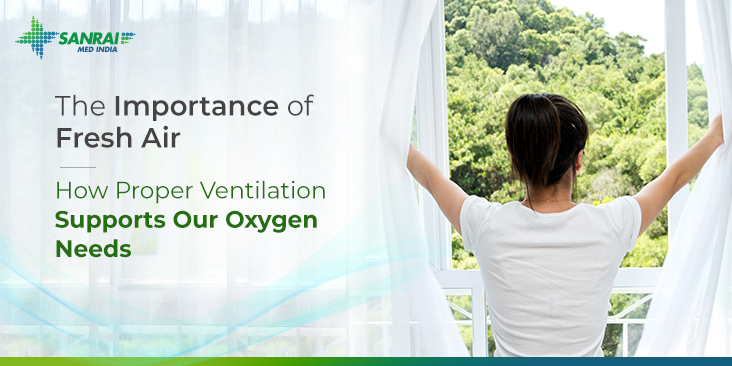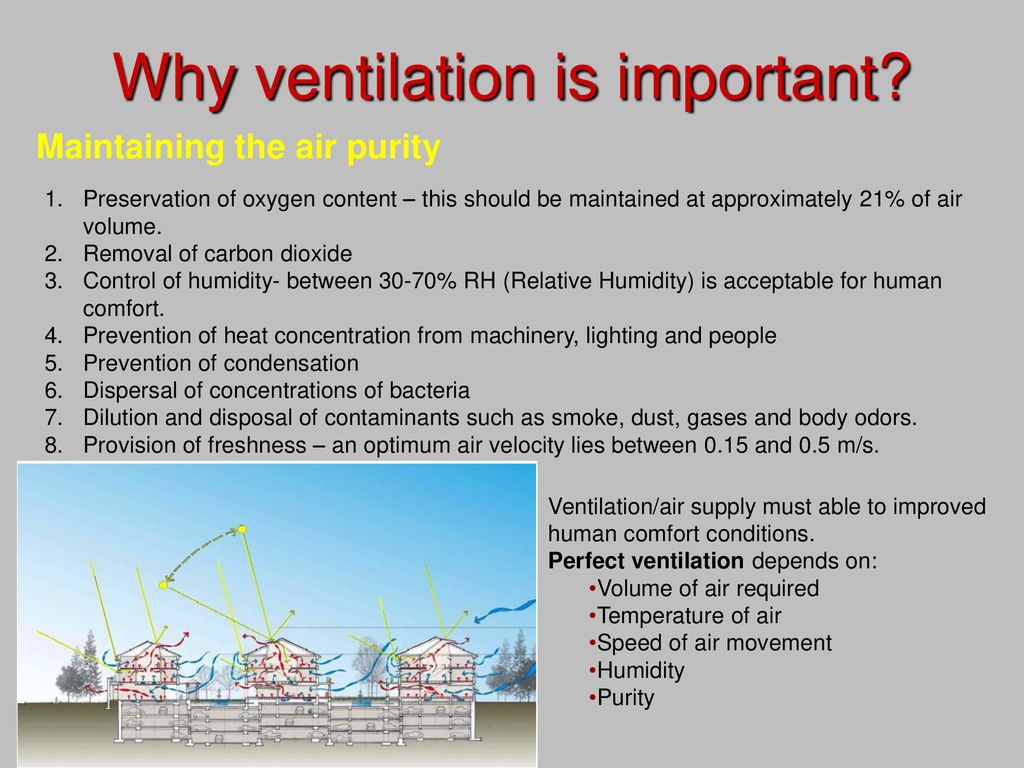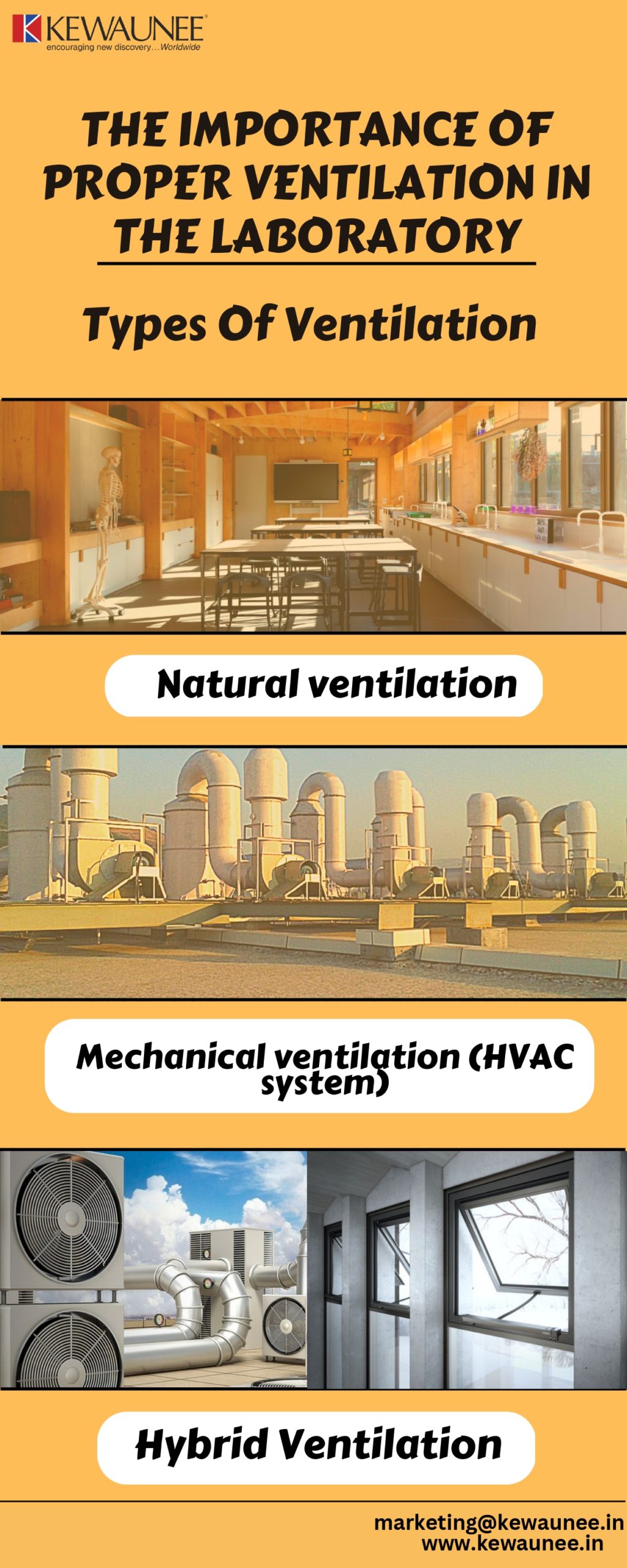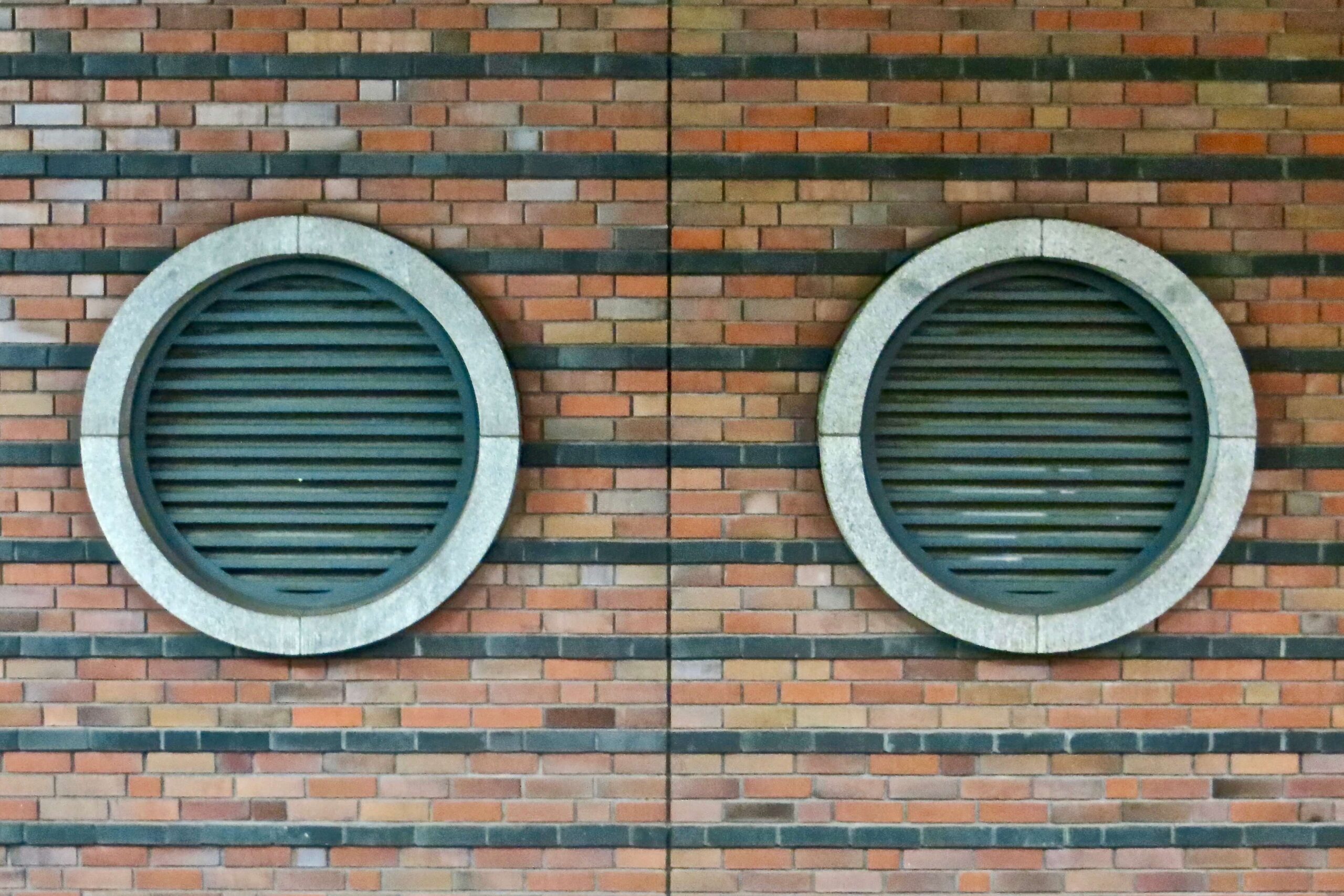Proper ventilation plays a vital role in maintaining a healthy and comfortable living environment. It not only helps regulate temperature and remove odors, but also plays a crucial role in reducing the risk of indoor air pollution and the spread of airborne illnesses. Without adequate ventilation, indoor spaces can become stagnant, trapping pollutants, allergens, and humidity, which can lead to various health issues. In this article, we will explore the essential importance of proper ventilation and its impact on our overall well-being. Whether it’s in our homes, offices, or public places, understanding the significance of ventilation is key to creating a safe and comfortable space for everyone.
The Vital Importance of Proper Ventilation

This image is property of sanraimed.com.
Introduction to the Importance of Proper Ventilation
Proper ventilation is a fundamental aspect of maintaining a healthy and comfortable indoor environment. It refers to the process of exchanging air within a space to remove pollutants, control temperature and humidity, and ensure an adequate supply of fresh air. Ventilation plays a crucial role in promoting human health, improving air quality, and preventing the accumulation of harmful substances. Additionally, it has a significant impact on energy efficiency, cost savings, and overall well-being in various settings, from residential buildings to healthcare facilities and more.
Health Benefits of Proper Ventilation
Airborne Contaminant Removal
Proper ventilation aids in the removal of airborne contaminants such as dust, smoke, odors, and chemical pollutants, which can have detrimental effects on human health. Inadequate air circulation can lead to the buildup of these pollutants, increasing the risk of respiratory issues, allergic reactions, and other health problems. By efficiently removing these contaminants, ventilation helps maintain a clean and healthy indoor environment.
Disease Prevention
Good ventilation plays a vital role in preventing the spread of infectious diseases within indoor spaces. Adequate airflow and ventilation systems can help dilute and disperse airborne pathogens, reducing the likelihood of transmission. This is particularly relevant in settings such as hospitals, schools, and commercial establishments where people gather in close proximity.
Reduced Risk of Respiratory Issues
Proper ventilation helps reduce the risk of respiratory issues such as asthma and allergies. By continuously replacing stale and contaminated air with fresh air from outside, ventilation helps remove allergens, irritants, and triggers that may worsen respiratory conditions. This is especially important for individuals with pre-existing respiratory problems or sensitivities.
Better Sleep and Mental Well-Being
Ventilation also plays a crucial role in facilitating optimal sleep quality and promoting mental well-being. Well-ventilated bedrooms provide a more comfortable and refreshing sleeping environment, allowing for a restful and rejuvenating night’s sleep. Proper airflow and removal of indoor pollutants can also help reduce anxiety, stress, and improve overall cognitive function, leading to enhanced mental well-being.
Improved Indoor Air Quality
Sources of Indoor Air Pollution
Indoor air pollution can arise from various sources such as cooking, cleaning products, building materials, and furnishings. These sources release harmful contaminants such as volatile organic compounds (VOCs), formaldehyde, mold spores, dust mites, and pet dander. Without adequate ventilation, these pollutants can accumulate indoors, leading to poor air quality and potential health risks.
Effect of Poor Air Quality on Health
Poor indoor air quality can have severe health implications, including respiratory problems, allergies, eye irritation, headaches, and fatigue. Prolonged exposure to indoor pollutants can also contribute to the development of more serious conditions such as cardiovascular disease, cancer, and respiratory infections. Proper ventilation effectively removes and dilutes these pollutants, improving the overall indoor air quality and safeguarding health.
Types of Ventilation Systems
Various types of ventilation systems can be implemented to ensure proper air exchange in different settings. These include natural ventilation, mechanical ventilation, and hybrid systems. Natural ventilation relies on fresh air entering through windows, doors, or other openings, while mechanical ventilation uses fans, exhaust systems, and air purifiers to control air circulation. Hybrid systems combine elements of both natural and mechanical ventilation to provide optimal indoor air quality.
Importance of Adequate Air Exchange
Adequate air exchange is crucial for maintaining good indoor air quality. The introduction of fresh outside air and the removal of stale indoor air helps dilute and remove contaminants, regulate temperature and humidity, and provide a comfortable and healthy environment. Insufficient air exchange can result in a buildup of pollutants, leading to compromised air quality and potential health hazards.
Reduction of Allergens and Asthma Triggers
Common Allergens in Indoor Environments
Indoor environments can harbor various common allergens, including dust mites, pet dander, mold spores, pollen, and cockroach allergens. These allergens can trigger allergic reactions, asthma attacks, and other respiratory issues, particularly in individuals with sensitivities. Proper ventilation helps control the level of allergens present in indoor spaces, reducing the risk of allergic reactions and asthma symptoms.
Allergic Reactions and Asthma Symptoms
Allergic reactions to indoor allergens can manifest as nasal congestion, sneezing, itchy or watery eyes, throat irritation, and skin rashes. For asthma sufferers, exposure to allergens can result in wheezing, coughing, shortness of breath, and chest tightness. Ventilation systems that effectively filter and remove allergenic particles from the air can significantly alleviate these symptoms and improve indoor air quality for allergy and asthma sufferers.
Ventilation Strategies for Allergy and Asthma Relief
To mitigate allergens and asthma triggers, proper ventilation strategies should be implemented. This includes using high-efficiency air filters in HVAC systems, regularly cleaning and vacuuming indoor spaces, maintaining optimal humidity levels to inhibit mold growth, and ensuring proper ventilation in areas prone to allergen accumulation. Implementing these strategies can create an indoor environment that promotes respiratory health and provides relief for allergy and asthma sufferers.

This image is property of slideplayer.com.
Elimination of Toxic Chemicals and VOCs
Volatile Organic Compounds (VOCs)
Volatile organic compounds (VOCs) are gases emitted by various household products, furnishings, and building materials. These compounds can have adverse health effects, including eye, nose, and throat irritation, headaches, nausea, and even long-term health risks. VOCs are a significant contributor to indoor air pollution, and proper ventilation is essential in minimizing exposure to these toxic chemicals.
Health Risks Associated with VOC Exposure
Exposure to high levels of VOCs can lead to both short-term and long-term health risks. Short-term effects may include respiratory problems, allergies, dizziness, and fatigue, while long-term exposure can contribute to the development of respiratory diseases, liver and kidney damage, and even cancer. Adequate ventilation is critical in removing VOCs and reducing the health risks associated with exposure.
Ventilation Techniques to Minimize VOCs
Proper ventilation techniques can effectively minimize VOC levels in indoor environments. These techniques include utilizing mechanical ventilation systems with activated carbon filters to remove VOCs from the air, increasing natural ventilation by opening windows and doors, and using low-VOC or VOC-free building materials and furnishings. These strategies help maintain a healthier indoor environment by reducing the presence of toxic chemicals and promoting clean air quality.
Prevention of Mold and Mildew
Conditions Favorable for Mold Growth
Mold and mildew thrive in environments with excess moisture and poor ventilation. Areas with high humidity levels or water damage, such as bathrooms, kitchens, and basements, are particularly prone to mold growth. Mold can release spores into the air, leading to respiratory issues, allergies, and other health problems. Proper ventilation is crucial in preventing mold and mildew growth by controlling humidity levels and providing adequate airflow.
Health Implications of Mold Exposure
Exposure to mold can cause a range of health issues, including allergic reactions, asthma attacks, respiratory infections, and skin irritation. Individuals with compromised immune systems or pre-existing respiratory conditions are especially susceptible to the adverse effects of mold exposure. By implementing effective ventilation systems, the risk of mold growth can be significantly reduced, creating a healthier and safer indoor environment.
Role of Ventilation in Mold Prevention
Proper ventilation plays a pivotal role in mold prevention. Adequate airflow and ventilation help control excess moisture, discourage condensation, and promote the drying of damp surfaces. Well-ventilated spaces, coupled with regular maintenance, leak repairs, and proper insulation, create an environment where mold growth is less likely to occur. Ventilation strategies such as exhaust fans, dehumidifiers, and air exchange systems are effective tools in combating mold and ensuring a mold-free living or working environment.

This image is property of www.ykkap.co.id.
Enhanced Comfort and Well-Being
Temperature and Humidity Control
Proper ventilation contributes to optimal temperature and humidity control, creating a comfortable indoor environment. Ventilation systems help regulate the exchange of hot and cold air, maintaining a balanced and pleasant temperature. Additionally, effective ventilation helps control humidity levels, preventing excessive moisture or dryness that can lead to discomfort and potential health issues.
Even Distribution of Fresh Air
Adequate ventilation ensures the even distribution of fresh air throughout indoor spaces. Stale air can often accumulate in certain areas, leading to stuffiness, odors, and poor air circulation. Proper ventilation systems, coupled with strategic air vents and exhaust fans, promote the circulation and distribution of fresh air, creating a more comfortable and inviting atmosphere.
Reduced Stuffiness and Odors
Insufficient air circulation can result in stuffiness and the accumulation of odors in enclosed spaces. Proper ventilation helps eliminate stagnant and musty air, preventing the buildup of unpleasant odors. By continuously replacing stale air with fresh air, ventilation systems effectively mitigate odors and create a more pleasant and inviting environment.
Impact on Psychological and Emotional States
Proper ventilation has a notable impact on psychological and emotional well-being. Research has shown that good indoor air quality and adequate ventilation contribute to improved mood, reduced stress levels, and enhanced cognitive function. Fresh air and a comfortable indoor environment promote overall well-being, leading to increased productivity, concentration, and a more positive mindset.
Increased Productivity and Cognitive Function
Effect of Indoor Environment on Performance
The indoor environment has a significant impact on productivity and cognitive function. Poor indoor air quality, inadequate ventilation, and uncomfortable temperature or humidity levels can negatively affect concentration, memory, decision-making, and overall cognitive performance. Proper ventilation ensures the supply of fresh air and optimal indoor conditions, fostering improved productivity, creativity, and cognitive function.
Cognitive Benefits of Good Ventilation
Good ventilation provides numerous cognitive benefits, positively influencing brain function and mental capabilities. Studies have shown that increased ventilation rates and improved indoor air quality can enhance cognitive performance, including attention span, information processing, and decision-making abilities. By delivering sufficient oxygen to the brain and effectively removing pollutants, ventilation helps create an environment that supports optimal cognitive function.
Impact on Concentration and Decision-Making
A well-ventilated indoor environment contributes to enhanced concentration and decision-making abilities. Fresh air and proper ventilation promote alertness, focus, and clarity of thought, allowing individuals to perform tasks more efficiently and make informed decisions. By eliminating distractions and maintaining a comfortable and healthy atmosphere, ventilation plays a crucial role in optimizing cognitive performance.

This image is property of www.kewaunee.in.
Energy Efficiency and Cost Savings
Proper ventilation contributes to energy efficiency and cost savings in various ways. Energy-efficient ventilation systems are designed to minimize energy consumption while effectively improving indoor air quality. By ensuring the proper balance of fresh air and minimizing unnecessary heat loss or gain, ventilation systems help regulate temperature, reduce the workload on heating and cooling systems, and ultimately lower energy costs.
Importance of Ventilation in Specific Settings
Residential Buildings
Proper ventilation is essential in residential buildings to maintain a healthy and comfortable living environment. Well-ventilated homes help control indoor moisture levels, prevent mold growth, provide fresh air, and improve overall indoor air quality. This is particularly important for households with children, elderly individuals, or individuals with respiratory conditions, as proper ventilation contributes to their well-being and health.
Commercial Establishments
Proper ventilation in commercial establishments is crucial for the comfort, safety, and productivity of employees and customers. Adequate airflow, regulated temperature, and removal of indoor pollutants are essential factors for creating a pleasant and healthy working or commercial environment. Proper ventilation also plays a role in compliance with building codes and regulations governing the safety and well-being of occupants.
Schools and Educational Institutions
Effective ventilation is vital in educational institutions to provide a conducive learning environment for students and teachers. Good indoor air quality and proper ventilation systems promote concentration, cognitive performance, and overall student well-being. Maintaining adequate ventilation also ensures the removal of potential allergens, germs, and airborne contaminants, reducing the risk of illness and creating safer spaces for learning.
Healthcare Facilities
Proper ventilation is paramount in healthcare facilities to maintain sterile environments and control the spread of infections. Ventilation systems in hospitals, clinics, and healthcare settings are designed to ensure the removal of airborne pathogens, maintain optimal air quality, and regulate temperature and humidity levels. Efficient ventilation also contributes to patient comfort, aiding in the healing process and reducing the risk of complications.
Industrial and Manufacturing Facilities
Proper ventilation is crucial in industrial and manufacturing facilities to control air quality, remove harmful particles, and ensure the safety of workers. These environments often involve the production of dust, fumes, and other hazardous substances that can pose health risks. Efficient ventilation systems, tailored to specific industrial processes, help maintain a safe and healthy working environment, preventing the accumulation of contaminants and minimizing exposure to harmful substances.
In summary, proper ventilation is of vital importance in maintaining a healthy, comfortable, and productive indoor environment. It significantly contributes to improved air quality, reduction of allergens and pollutants, prevention of mold and mildew, enhanced comfort and well-being, increased productivity and cognitive function, energy efficiency, and cost savings. Whether in residential buildings, commercial establishments, educational institutions, healthcare facilities, or industrial settings, implementing effective ventilation systems is essential for the overall health, safety, and well-being of occupants.

This image is property of uploads-ssl.webflow.com.
The post The Vital Importance of Proper Ventilation appeared first on Diamond Air Design.

